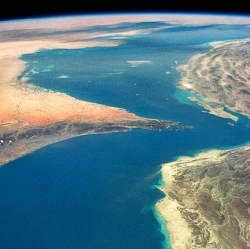
When dwarf planet 2012 VP113 was discovered in March, it joined a handful of small, rocky objects known to reside past the orbit of Pluto. These objects have curious orbits, which hint that an unseen monster planet even further out is influencing their behaviour.
Carlos and Raul de la Fuente Marcos at the Complutense University of Madrid in Spain took another look at these distant bodies. They found that groups of the objects cluster in different ways, suggesting that not one but two giant planets "shepherd" the smaller objects around. At 200 and 250 times Earth’s distance from the sun, even these giants would be difficult to observe, says Carlos. "It’s not at all surprising that they haven’t been found yet."
The existence of an outer planet beyond Pluto has been a matter of debate for decades and the recent discovery of 2012 VP113 has just revived the interest for this controversial topic. This Sedna-like object has the most distant perihelion of any known minor planet and the value of its argument of perihelion is close to 0 degrees.
This property appears to be shared by almost all known asteroids with semimajor axis greater than 150 au and perihelion greater than 30 au (the extreme trans-Neptunian objects or ETNOs), and this fact has been interpreted as evidence for the existence of a super-Earth at 250 au. In this scenario, a population of stable asteroids may be shepherded by a distant, undiscovered planet larger than the Earth that keeps the value of their argument of perihelion librating around 0 degrees as a result of the Kozai mechanism.
Here, we study the visibility of these ETNOs and confirm that the observed excess of objects reaching perihelion near the ascending node cannot be explained in terms of any observational biases. This excess must be a true feature of this population and its possible origin is explored in the framework of the Kozai effect. The analysis of several possible scenarios strongly suggest that at least two trans-Plutonian planets must exist.
